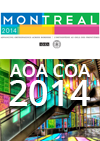
COA/AOA: Locked plates versus retrograde nails in distal femur fracture treatment

COA/AOA: Locked plates versus retrograde nails in distal femur fracture treatment
Locked plating vs retrograde nailing for distal femur fractures: a multicenter randomized trial
CONFERENCE ACE REPORTS
This ACE Report is a summary of a conference presentation or abstract. The information provided has limited the ability to provide an accurate assessment of the risk of bias or the overall quality. Please interpret the results with caution as trials may be in progress and select results may have been presented.
Synopsis
126 patients, ranging from 16-90 years of age, with fracture of the distal femur were randomized to internal fixation through either locked plating or retrograde intramedullary nailing. Participants were followed-up for 12 months for radiographic, functional, and physical outcomes. Both methods of internal fixation demonstrated a comparable rate of malalignment, although plating was associated wit...
To view the full content, login to your account,
or start your 30-day FREE Trial today.
FREE TRIAL
LOGIN
Forgot Password?
Explore some of our unlocked ACE Reports below!

Learn about our AI Driven
High Impact Search Feature
Our AI driven High Impact metric calculates the impact an article will have by considering both the publishing journal and the content of the article itself. Built using the latest advances in natural language processing, OE High Impact predicts an article’s future number of citations better than impact factor alone.
Continue



 LOGIN
LOGIN

Join the Conversation
Please Login or Join to leave comments.